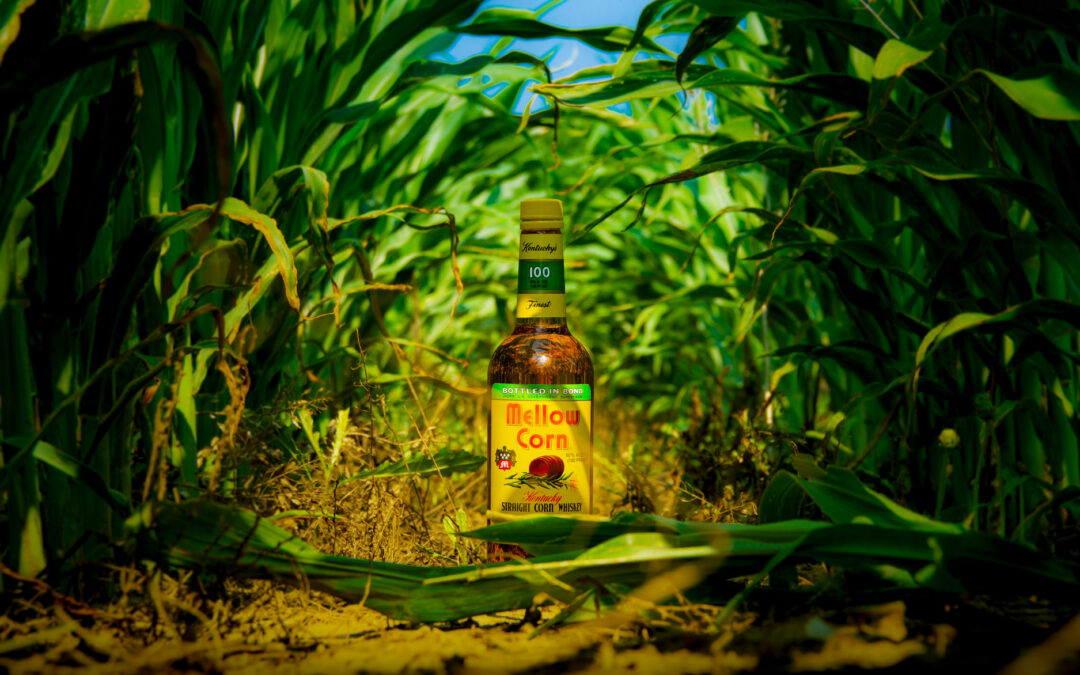Mellow Corn, the biggest secret in the whiskey world, known as the “bartender’s handshake” until it suddenly went viral over the last year or so. It’s an ugly bottle and it’s under $15 – can it actually be any good? Hol’ up – I’ll tell you.
First of all, Mellow Corn has been around for 76 years. It was first distilled in 1945 by the Medley Distilling Company, but was purchased by Heaven’s Hill in 1993 along with a bunch of other brand names. The President of Heaven’s Hill, Max Shapira saw Mellow Corn on the inventory list of brands and asked if United Distillers wanted to add that to the buy, and they basically answered with, “yeah, throw it in.”
Heaven’s Hill also saved Rittenhouse Rye and Pikesville Rye when they were dying on the vine, too. Now it’s tough to order a Sazerac in a bar and not have it mixed with Rittenhouse.
The label still has the Medley family crest on it. Look at the label closely – it still carries the 1945 copyright. It’s corny (sorry) but also super-cool.
Mellow Corn is a Bottled In Bond Corn Whiskey, which means it needs to be 100 proof and had to have been aging for no less than four years in a government bonded warehouse. It’s also the product of a single distiller at a single distillery in a single distillation season.
Corn whiskey has to have a mash bill of 80% corn, and although there’s no specific aging requirement, it does need to sit in used or uncharred oak containers, unlike bourbon which must only have at least 51% corn (but can have 100% and still be called bourbon) and must be aged in brand new, newly charred oak containers. Mellow Corn is aged in charred casks that were already used before, and it’s reported mash bill is actually rumored to be 90% corn, with the remaining 10% being the rye and malted barley.
(ii) “Corn whisky” is whisky produced at not exceeding 160° proof from a fermented mash of not less than 80 percent corn grain, and if stored in oak containers stored at not more than 125° proof in used or uncharred new oak containers and not subjected in any manner to treatment with charred wood; and also includes mixtures of such whisky.
If it’s aged for two years in the prescribed oak containers and has no added colors or flavorings, it can be called a straight corn whiskey.
Experts say that because corn whiskey can be aged in any used barrel the future could be bright. It could be aged in barrels previous used to age a heated, smokey scotch, or perhaps a tawny port wine or something else.
This was my review:
Nosing it, I sensed a sweetness, maybe even a mellow sugariness to it. The ethanol was present, but it was tough to pick out normal profiles.
On the palate the ethanol was strong because of the higher proof, but I also got oak notes, and reminders of toasted sweet cereal, like Post Toasties. I sensed butter and a little pepper on the end.
The finish reminded me of that sweetness you experience when you first pull a corn husk off an ear of corn. It was actually quite pleasant.
~ KC Allen, July 08, 2021
I can only tell you that it’s a worthy family member on your bar. It’s a great conversation piece, and I like it.
🥃
Cheers

